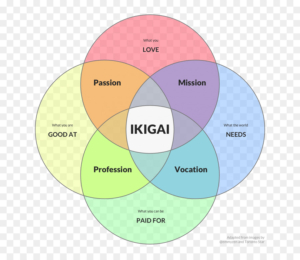Learning and Teaching Have Changed Forever

For some time, the education world has been struggling to maintain itself in the face of the obvious need to make changes. Normally change is an evolution not a revolution. However, the competing interests feel very much comfortable with how things are operating. The Teachers Unions, The School Boards, the State Bureaucrats and the Federal Government were very much into the status quo. BUT. The Students and their Parents, who I believe are the customers of the education business were not.
Then came the Pandemic.
All of a sudden, the students and parents were in the same place at the same time and both parties could see how and what their children were being taught. The parents didn’t like what they heard and saw with the material and the methods with which their children were being taught. They then started to show up in larger numbers and more regularly at Parent Teacher Meetings and School Board meetings. And they made themselves heard. The School Boards didn’t like this one bit, imagine the parents interfering with what the Boards were doing. Their expertise and authority were being challenged by these unruly parents who were demanding answers.
Then the National School Board Association wrote a letter to the government of the United States complaining about these parents and even going so far as to call them terrorists. Imagine calling your customers terrorists? My intent is not to get into the weeds of politics with this introduction. It is simply to provide the background to a subject that I am very passionate about and want to discuss with you. Each person on the planet should be able to receive a good education.
Learning takes on what I believe are four major methods: classroom, webinar, internet-based and self-study.
The classroom will never go away. There is a real benefit to having a person who knows how to teach and has subject matter expertise sharing that knowledge with willing and able interested people. We have learned a lot about classroom learning. The fifty-minute class is changing. The material is being delivered in smaller chunks. Statistics are showing that this has an extremely positive impact on learning and retention.
The webinar is a tool that I am not particularly fond of as a teacher. I cannot see the students. I don’t get the feedback that I am used to in the classroom on each individual’s understanding about what I am talking about in the session. However, when it comes to product knowledge and other very specific learning, they are a terrific tool. I have always liked to have one of the employees conduct this training. The employee doesn’t want to be embarrassed in front of their peers. So, they really learn the material. Each session is done by a different employee and as a result we improve the skills and knowledge of the complete team of customer service employees.
The internet-based learning programs have become a serious and growing concern in a relatively short period of time. You can see that major United States Universities, Harvard and MIT and Georgia Tech to name a few, have their complete curriculum available for online learning. Specialty businesses have arrived from The Khan Academy to Coursera and many others there are learning opportunities online that will be here for the rest of time or until the next major disruption.
Self-Study will always be here as long as there are people who want to learn. Reading is one of my favorite hobbies and pastimes. You can transport yourself to any era and any area on any subject in the world and beyond between the covers of a book. We still have a Reading List on our Consulting Website until the end of this year at www.rjslee.com under the tab Reading List.
Katy Tynan, a principal analyst at Forrester Research recently made the following observations. “Prior to the Pandemic, there was an overemphasis on formal learning as a delivery mechanism. Formal, classroom-delivered training was easy to plan and deliver, but organizations didn’t always see the intended results.” Haven’t most of us felt that way at one time or another about classroom training?
Tracy Malcolm, a global future of work leading at the consulting firm Willis Towers Watson goes further. “Organizations are starting to pursue learning in new forms, and certainly at a new pace, where it’s much more frequent learning opportunities. The formal training itself is certainly bite-sized, so that it can be consumed more quickly. And the pace of learning increased.” At the same time, we are now flooded with a massive amount of student debt. The largest single debt in the country.
There are many voices starting to sound similar alarms.
When we started with Management Training at Quest, Learning Centers, we did the same thing as most other teaching or training business did. Our classes spanned two days in locations that were easily accessible to our client base. Sixteen hours of training. We built the classes to cover sales, operations, assets and leadership. Four hours for each of those areas and two subjects in each four-hour time block. The students would come in from their dealerships the day before and spend two nights in hotels and pay for their room and board as well as the tuition cost of the classes. We got very good response and also very good reviews of the content and the way we taught. We built eight such programs.
We started to notice a problem with our teaching, or more appropriately the learning and retention of our content that the students experienced. They would get back to the company and be caught up instantly in the old routines to the point that they were not able to implement any of what they had learned. We had too many people working in the business and too few people working on the business.
Our sponsors and clients were noticing similar things and wanted to approach the teaching from a different perspective. Thus, the webinar was born.
The webinar did not require people to travel or stay in hotels or eat meals in restaurants. It was cheaper. It also was shorter. The webinars that I conducted typically ran between forty-five minutes and an hour. The vehicle for teaching and by extension learning was changed. It is shortened, which leads to measurably more learning and better retention. Further, the employee was not taken away for two days at a time. But the teacher didn’t have the same tools to evaluate the learning of each student. We changed the delivery methods on our webinars and using a computer driven projector that I could operate remotely and turn off the slide presentation and walk in front of the camera and talk to the audience directly. They could see me and my antics. I was transitioning to Hawaii at the time so I started to wear Hawaiian Aloha Shirts. Many people have commented on those shirts in that they were annoyed when I wore the same shirt more than once.
We moved away from webinars in 2015 and converted all of our learning programs to the internet starting in 2016. It has been a much larger job that I had anticipated. With our two-day programs and the structures that we used, we had three separate programs; What it Looks Like When it is Right, Reaching Market Potential, and Performance Excellence. So, we had six discrete classes for each of the four disciplines. Twenty-four classes for parts, and service and product support selling and marketing.
The first order of business was to research and select a “Learning Management Software.” This was not easy nor were we very sophisticated or knowledgeable about what we wanted and needed. Needless to say, we are on our second LMS. We make mistakes like everyone else.
Then we had to determine how we wanted to build the classes. That is our wheelhouse. Caroline has a Master Degree in Education and I taught people how to teach at McGill University in Montreal. We built our classes to start with optional reading material, then a mandatory pretest to gauge the knowledge of the student before they start the class. The subject specific material we created covered in the range of 125 to 160 slides each one of them with audio tracks. We then embedded film clips to highlight key points and material. Further we added quizzes to break up the learning. We put about ten quizzes into each of the programs. Caroline then put all of this material, the slides, the audio tracks, the film clips and the quizzes into the form of a video. That allows the students to stop and start or go back and forth to review the material. We wanted the students to learn, to understand the material and become more knowledgeable as people both personally and professionally. Then we added a final assessment. This was a twenty-question assessment of the knowledge and skills of the students on that specific subject class. They had to obtain a score of 80% on this assessment in order to pass the class and earn their certificate. However, before the students can get their certificate, they have to provide us an evaluation of the class through a survey. Finally, they can print their certificate which will also show them how many CEU’s, Continuing Education Units.
We now have one hundred and eight subject specific classes, and we will continue to add classes as they are requested. Each class is reviewed monthly for adjustment based on the surveys and the assessments results. For instance, if a majority of the students get the same wrong answer to the same question, we review that section of the class to ensure that it is not our teaching that is at fault. If it is the material that is causing the problem, we make adjustments.
Another interesting aspect of our work is the feedback that we receive constantly about what our customers want and need. They tell us what they want. And we listen. Do we ever listen.
When we built the classroom material, we used voice recognition software and I dictated to the computer. It was like I was teaching in a classroom. In the nineties the voice recognition software was not at all at the same level as what it is today. I would talk to the computer and go away. Thirty minutes talking forty minutes doing something else while the computer continued to convert my voice to a word document. Once I had the classes built, I invited people for whom I had a lot of respect and asked them for their time in a classroom with me to see what I had created. I wanted their objective evaluation of what I had done. From that platform, my background and experience in the business and in teaching, complimented with the experience and knowledge of the very generous people who helped put the final touches on our work and created Quest, Learning Centers. I will never forget what those people did to help me. You know who you are and I thank you sincerely.
Over the years our twenty group facilitation businesses first with Insight, M&R, Institute in partnership with Malcolm Phares who started the “Twenty Group” concept when he was VP of Dealer Development for PACCAR, and now with The Capital Goods Sages, in partnership with Dale Hanna of Foresight Intelligence has provided invaluable discussions and debates with experienced executives on their dealerships. This provided learning opportunities for me that was also invaluable.
Since 1980 our consulting business has afforded me the opportunity to work with hundreds if not over a thousand dealerships around the world. I have been provided an opportunity in my business life that few others have been given. As I have said to many people over the years. “If you play two rounds of golf everyday for six months and you don’t get pretty good at it, well someone is trying to tell you something. I have learned something from each consulting engagement and each of the twenty group meetings and from a large number of very skilled people in our classes.
Over the past fifty-two years we have had over twenty-five thousand students either in a classroom or a webinar or an internet-based class. I have learned a lot from the interaction with all of these people.
Yet even with that background and experience we are in a constant state of looking to get better at what we do and how we do it. We offer blogs, podcasts, newsletters and audio learning on a complimentary basis as a means of transferring knowledge to interested people. We have a group of people as Contributors helping us. These people are an invaluable help to us. They are Thought Leaders who are challenging the status quo and the world in which we live as well as experienced executives and influencers. We are grateful to each of them for everything that they do for all the employees in the Product Support world.
One of the changes that we see being beneficial is to have training going on continuously for everyone. We advocate that each employee in the Product Support world who leads people or touches customers have one skill assessment tied to their job each year and take at least three classes each year to improve their skills and knowledge. “You need to have regular reinforcement of what you’ve been learning” so says Wayne Vascio, Professor of Management at the University of Colorado. He continues “You use it or you lose it.” “Simply doing it one-off or learning a skill one time and then not being able to practice and use it on the job, is a recipe for skill decay.”
Another thing Caroline is taking us to is the fact that passive learning is not sufficient anymore. She gets that from her continuous learning for her teaching job and her education. I am excited about it. She caused us to put the quizzes into all of our classes. She is pushing to have optional Zoom meetings with people who have taken the same class with either Caroline or me leading the meeting. We talk about the subject specific class that they took and provoke discussions in a group setting. We are exploring having chat rooms for people who have taken classes with us where they can reach out to others in the Product Support World. Even going so far as Gamification of the Learning Experience.
One of the other things that has become painfully clear. There is an expression “those that cannot do, they teach.” This has never been a good idea. Over the course of my career at two different CAT dealers I was a Parts Manager, a Service Manager, I established the first Product Support Selling function, I designed buildings and dealer facilities, I was a Data processing Manager. I have walked the walk I don’t just talk the talk. The teacher has to know what the employees do in their jobs. What are the challenges and the obstacles to the job? This is not an abstract experience. We are even exploring, in some cases, having the employees training each other. This is invaluable in other ways as well. Everyone finds out who the best is at a particular subject or task.
Over the course of our fifty-two years in the industry, and the wonderful training I have received myself and the people from whom I have been able to learn from I am very humble and extremely grateful.
We will continue to keep you posted as we continue to change and adapt to the new realities in education and learning.
The Time is Now.
Did you enjoy this blog? Read more great blog posts here.
For our course lists, please click here.







